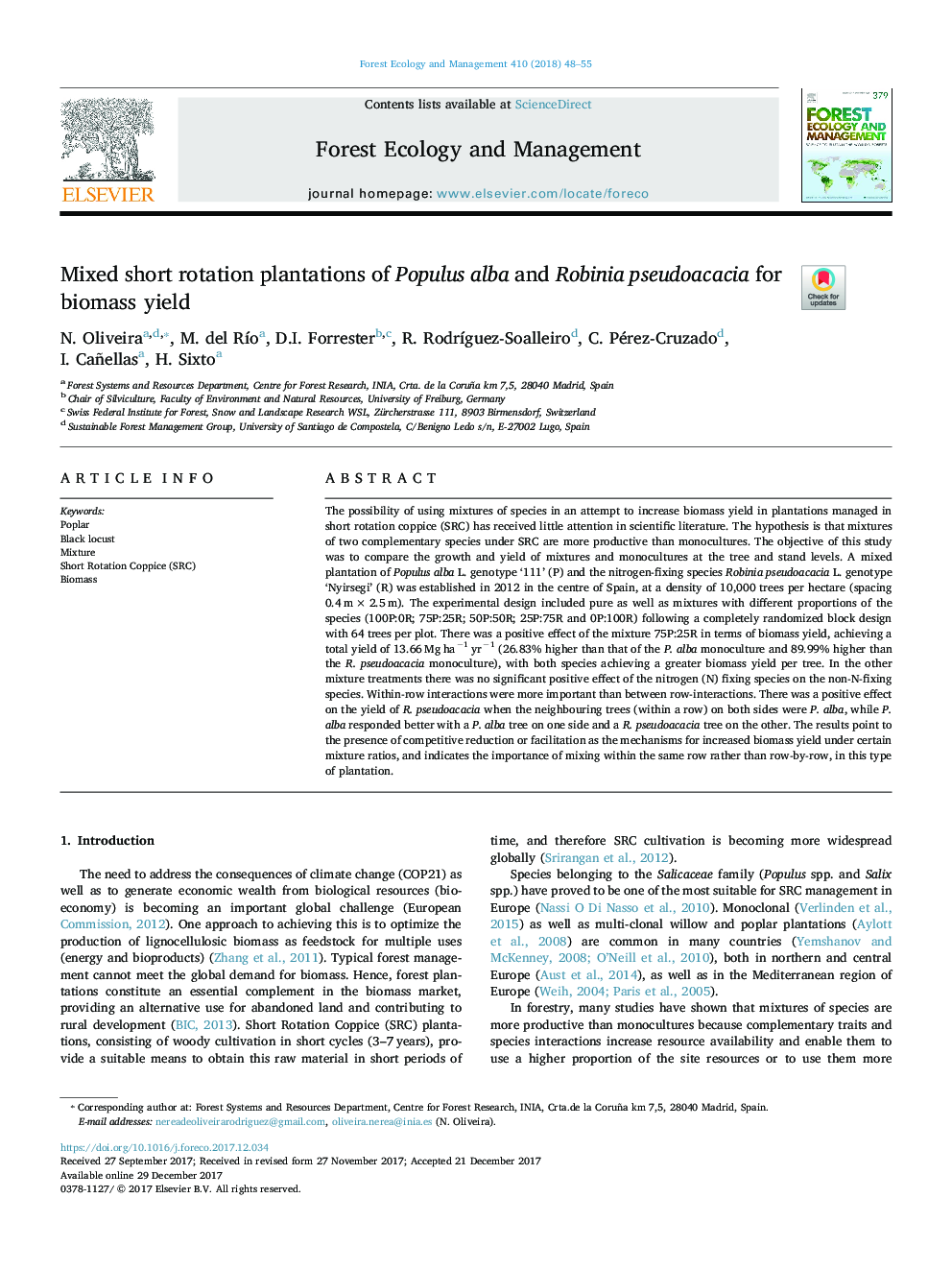| کد مقاله | کد نشریه | سال انتشار | مقاله انگلیسی | نسخه تمام متن |
|---|---|---|---|---|
| 6541849 | 1421348 | 2018 | 8 صفحه PDF | دانلود رایگان |
عنوان انگلیسی مقاله ISI
Mixed short rotation plantations of Populus alba and Robinia pseudoacacia for biomass yield
دانلود مقاله + سفارش ترجمه
دانلود مقاله ISI انگلیسی
رایگان برای ایرانیان
کلمات کلیدی
موضوعات مرتبط
علوم زیستی و بیوفناوری
علوم کشاورزی و بیولوژیک
بوم شناسی، تکامل، رفتار و سامانه شناسی
پیش نمایش صفحه اول مقاله

چکیده انگلیسی
The possibility of using mixtures of species in an attempt to increase biomass yield in plantations managed in short rotation coppice (SRC) has received little attention in scientific literature. The hypothesis is that mixtures of two complementary species under SRC are more productive than monocultures. The objective of this study was to compare the growth and yield of mixtures and monocultures at the tree and stand levels. A mixed plantation of Populus alba L. genotype '111' (P) and the nitrogen-fixing species Robinia pseudoacacia L. genotype 'Nyirsegi' (R) was established in 2012 in the centre of Spain, at a density of 10,000 trees per hectare (spacing 0.4â¯mâ¯Ãâ¯2.5â¯m). The experimental design included pure as well as mixtures with different proportions of the species (100P:0R; 75P:25R; 50P:50R; 25P:75R and 0P:100R) following a completely randomized block design with 64 trees per plot. There was a positive effect of the mixture 75P:25R in terms of biomass yield, achieving a total yield of 13.66â¯Mgâ¯haâ1â¯yrâ1 (26.83% higher than that of the P. alba monoculture and 89.99% higher than the R. pseudoacacia monoculture), with both species achieving a greater biomass yield per tree. In the other mixture treatments there was no significant positive effect of the nitrogen (N) fixing species on the non-N-fixing species. Within-row interactions were more important than between row-interactions. There was a positive effect on the yield of R. pseudoacacia when the neighbouring trees (within a row) on both sides were P. alba, while P. alba responded better with a P. alba tree on one side and a R. pseudoacacia tree on the other. The results point to the presence of competitive reduction or facilitation as the mechanisms for increased biomass yield under certain mixture ratios, and indicates the importance of mixing within the same row rather than row-by-row, in this type of plantation.
ناشر
Database: Elsevier - ScienceDirect (ساینس دایرکت)
Journal: Forest Ecology and Management - Volume 410, 15 February 2018, Pages 48-55
Journal: Forest Ecology and Management - Volume 410, 15 February 2018, Pages 48-55
نویسندگان
N. Oliveira, M. del RÃo, D.I. Forrester, R. RodrÃguez-Soalleiro, C. Pérez-Cruzado, I. Cañellas, H. Sixto,